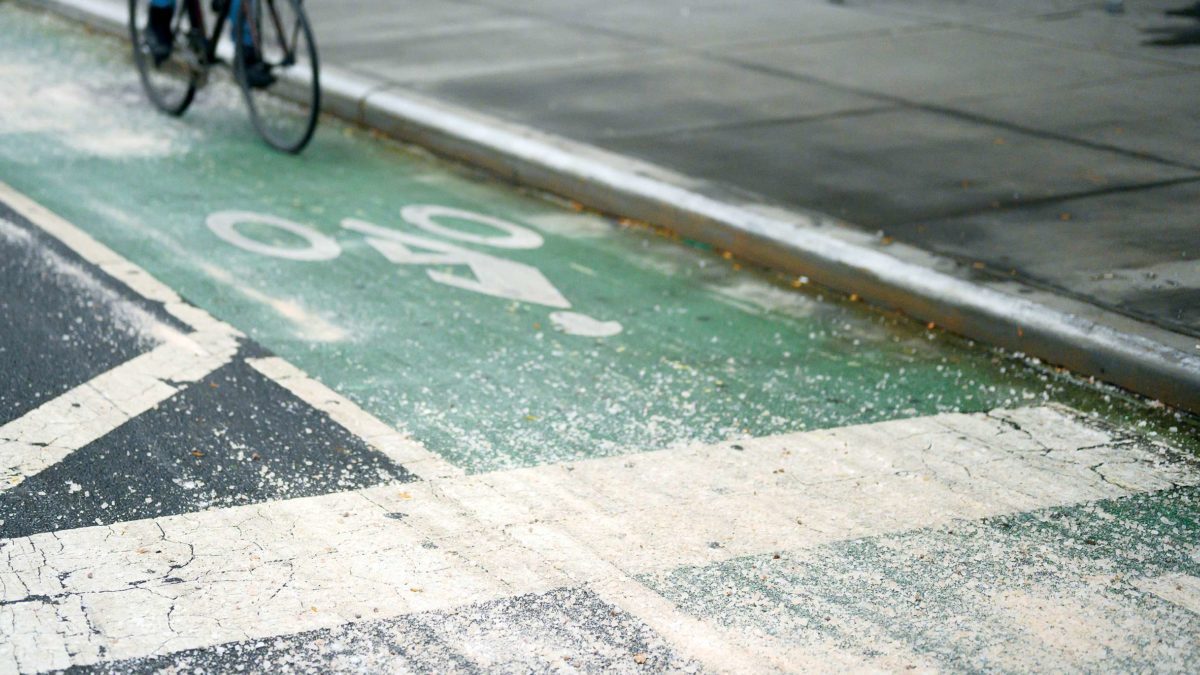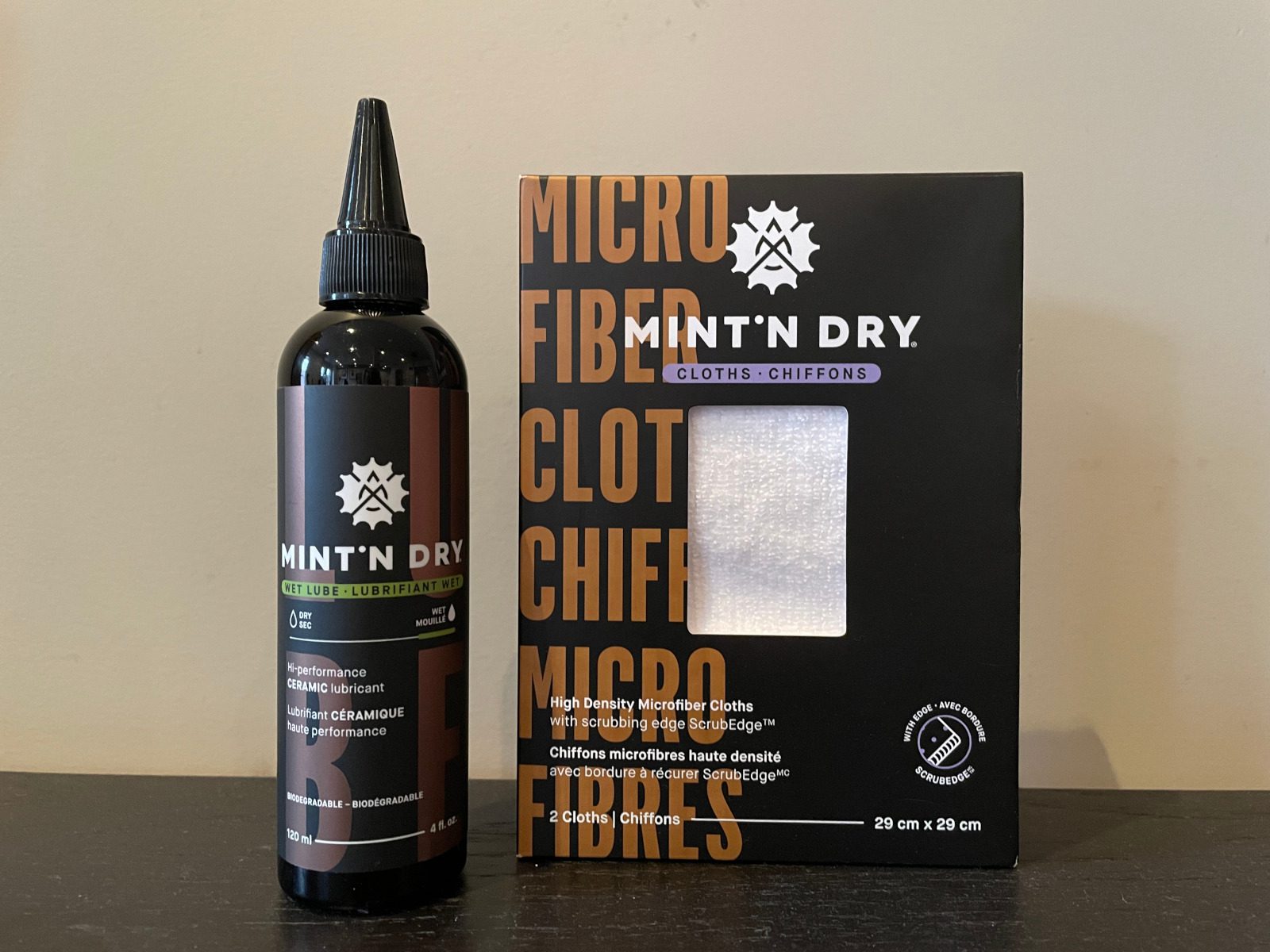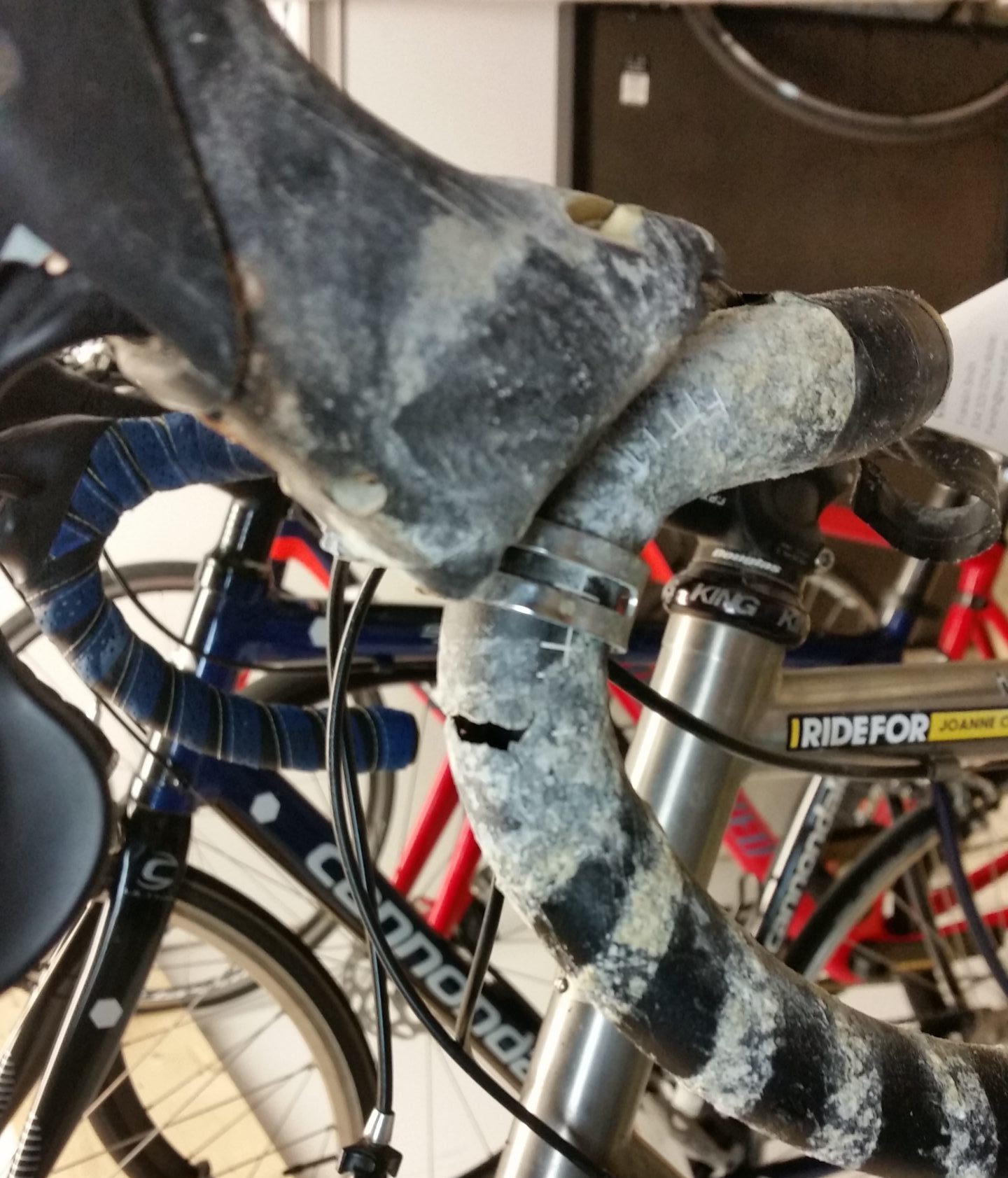When salt attacks! Winter riders, protect your bike against this vicious substance
Winter maintenance tips for outdoor and indoor riders

by Nick Di Cristofaro
Since we are Canadian cyclists, we now face the deep cold and snow of winter. Most of us are riding indoors through virtual worlds, but some brave souls, those year-round riders, are outside. If you are taking your bike out at this time of year, there are some important bits of maintenance you need to perform. Fat bikers, you should pay attention, too. Even though your bikes are purpose-built to ride in the snow, they are not salt- and moisture-proof. So, you hard-cores and aspiring hard-cores, this article is for you.
If you weren’t as diligent with your bike maintenance during the summer and fall, you should get a tune-up or even overhaul before you take on a lot of slush and snow. Clear up any issues; don’t compound them. You could say this is a fresh start before the abuse begins.

Road salt is the major source of your problems, along with moisture, when you ride in the winter. Salt will get everywhere. You’ll have to manage that substance. Let’s start with the heart of your bike, the drivetrain. Now is not the time to use a special watt-saving chain lube. Use a high-quality wet lube, not a wax or dry lube. The former will penetrate in the cold and protect better. Wipe the chain down after every ride. Reapply the lube if needed.
With the frame, you can mitigate the effects of salt and make cleanups easier before you head out. Apply a silicone-based polish/protectant using a microfibre cloth to surfaces that are completely clean. Some of these bike-specific products work wonders for shining up your ride. Be careful. Don’t get this polish on any braking surfaces or contact points, such as your saddle and handlebars.
Even if you ride on a dry winter day, your bike can get caked with salt residue. Try not to let it build up by washing it off as soon as you can. Use running water and a bike-friendly soap or detergent. Always try to loosen the residue first, which you should do before scrubbing to avoid damaging paint finishes. If running water isn’t an option, then the second-best method is to use a spray bottle to soak the dirty areas. I find a 50/50 mix of Simple Green and water works well. Let the spray sit for a minute before you begin cleaning.
Sometimes aluminum rim-brake surfaces and disc-brake rotors will have some corrosion even after cleaning. It’s best to clean these areas up with fine sandpaper or emery cloth. Scrub lightly, just enough to remove the surface marks. Afterward, clean thoroughly with isopropyl alcohol or non-chlorinated brake cleaner. Start with a clean cloth and rub until no more stains show up on the cloth. For disc-brake pads that still have pad material left, you’ll want to remove them from the calipers and clean them. Take a piece of sandpaper and place it on a flat surface. Rub the brake pad on the sandpaper in a figure-eight pattern until you see fresh pad material. Do not forget to clean pads with alcohol in the same manner as the rotor. Pop them back in, and then you’re ready to face the elements.

Indoor Salt
Don’t forget that your sweat is essentially salt water
A winter of heavy Zwifting will wreak havoc on your bike. Use a fan when riding indoors as the moving air will reduce perspiration. Drape a towel over your bar tops/headset area. Wipe your frame down after every ride if you are a heavy sweater. It’s also a good idea to pull apart your headset (especially the top cap and stem) and clean it once or twice during the indoor season.
This story originally appeared in the February & March 2022 issue of Canadian Cycling Magazine
